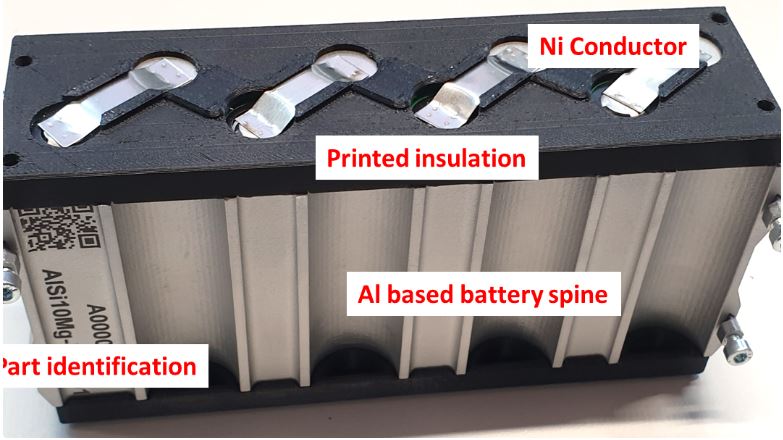BatPAM2 – 3D printed battery packaging: Where are the limits?
2022 Campaign: Additive Manufacturing, Microtech and Photonics – Innovation through Interdisciplinarity
A first study funded by IBAM has been previously carried to evaluate the potential of AM for manufacturing the different elements of the packaging, here composed of an aluminium based battery spine produced by LPBF and a polymer printed insulation. The battery spine is a key element in thermal management and mechanical protection. The packaging ratio represent ~33% of the total mass (585g) for a mass per spine of 54g (variation below 1%). Productivity achieved with current technology and process parameters (30um layer thickness) is about 10cm3/h. Cost of the spine is estimated around 250CHF per part including the post processing. The spine deformation has been minimized and the maximum deviation from CAD is less than 80um. The assembly is also very fast and easy thanks to AM. The current concept is being discuss with Beyond gravity to be continued for space applications with alternative funding.
E-mobility, from bicycles to aeronautics, is a trending topic right now in terms of reducing CO2 emissions. One of the key elements is the battery providing the energy source to the electric motor. If the battery cells do not cool down effectively during fast charging (and potentially during discharge), they can overheat due to an inefficient cooling system, resulting in a shorter lifetime. In addition, E-mobility will benefit from mass reduction potential offered by AM.
To solve the latter topic for the E-mobility application, productivity and costs need to be balanced. The proposed idea will address that topic by answering the following questions:
- What is the minimum mass that can be achieved with maintaining an adequate temperature of the cell? Objective will be to reach a package mass below 20% of the total mass.
- How to improve productivity and its influence on thermal performance? If layer thickness is double, what is the impact on the surface quality and thermal contact?
- What is the possible cost and volume achievable by AM? What are the limiting factors?
- How smart design can help demanufacturing and recycling the battery pack?




